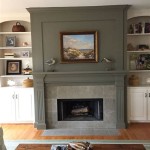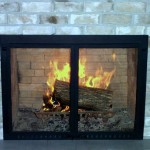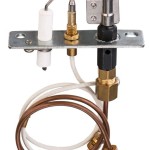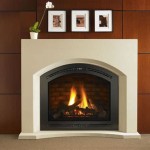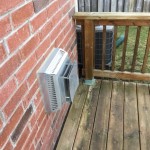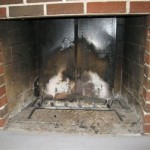Replacement Parts for Gas Fireplace Inserts: Ensuring Safety and Performance
Gas fireplace inserts offer an efficient and aesthetically pleasing way to heat a home. However, like any gas appliance, they require periodic maintenance and, eventually, replacement of worn or damaged components. Identifying the necessary replacement parts and understanding their function is crucial for ensuring the continued safe and efficient operation of the insert.
The lifespan of gas fireplace insert components varies significantly depending on usage, the quality of the original parts, and the environment in which the insert operates. Regularly inspecting the insert and addressing issues promptly can prevent more extensive and costly repairs down the line. This article will detail some of the most common replacement parts, their purposes, and factors to consider when sourcing them.
Key Components Requiring Replacement
Several key components within a gas fireplace insert are prone to wear and tear over time. Recognizing these parts and their associated symptoms of malfunction is the first step toward addressing potential problems.
Burner Assembly: The burner assembly is responsible for mixing gas and air to create a controlled and efficient flame. Over time, the burner ports can become clogged with dust, debris, or corrosion. This can lead to an uneven flame, reduced heat output, or even a complete failure to ignite. Replacement burners should match the original specifications of the insert to ensure proper gas flow and combustion.
The burner assembly typically consists of the burner itself, the gas orifice, and sometimes a venturi tube. The orifice is a small opening that meters the amount of gas flowing to the burner. A clogged or damaged orifice can drastically affect the flame's appearance and efficiency. Venturi tubes help to mix air and gas, enhancing combustion. Inspecting these components during routine maintenance can prevent performance issues.
Signs of a failing burner assembly include a weak or yellow flame (indicating incomplete combustion), soot buildup on the glass or surrounding areas, and difficulty igniting the fireplace. When replacing the burner, it's essential to clean the surrounding area and inspect the gas supply line for any leaks or damage.
Thermocouple or Thermopile: The thermocouple and thermopile are safety devices that ensure the pilot light is lit before allowing the main burner to ignite. The thermocouple generates a small electrical current when heated by the pilot flame, which keeps the gas valve open. The thermopile, a more robust version, generates a larger current, often used in millivolt systems to power the gas valve and other components.
If the pilot light repeatedly goes out, or if the main burner fails to ignite despite a lit pilot, the thermocouple or thermopile is likely the culprit. These components are relatively inexpensive and easy to replace, but proper installation is crucial. Ensure the replacement part is compatible with the specific gas fireplace insert model.
The lifespan of a thermocouple or thermopile is typically several years, but it can be shortened by exposure to excessive heat, corrosion, or physical damage. Regular inspection and cleaning of the pilot assembly can help extend the life of these components.
Igniter: The igniter, whether it's a spark igniter or a hot surface igniter, is responsible for initiating the combustion process. Spark igniters create a spark near the pilot light or main burner to ignite the gas. Hot surface igniters heat up to a high temperature, igniting the gas upon contact.
A malfunctioning igniter will prevent the fireplace from starting. With spark igniters, check the spark gap and ensure the electrode is clean and free from corrosion. Hot surface igniters can crack or burn out over time, requiring replacement. Ensure the replacement igniter is the correct voltage and wattage for the insert.
Some gas fireplaces use a piezoelectric igniter, which generates a spark when a button is pressed. These are generally reliable, but the button mechanism can sometimes fail. Replacement piezoelectric igniters are available and relatively easy to install.
Gas Valve: The gas valve controls the flow of gas to the burner. It's a critical safety component that must function reliably. Gas valves can fail due to age, corrosion, or electrical issues. A faulty gas valve can cause gas leaks, erratic burner operation, or a complete failure to ignite. This is a more complex repair and often requires a qualified technician.
There are different types of gas valves, including millivolt valves, electronic valves, and modulating gas valves. The type of valve depends on the specific fireplace insert model and its control system. When replacing a gas valve, it's essential to obtain the exact replacement part from the manufacturer or a reputable supplier.
Signs of a failing gas valve include difficulty turning the fireplace on or off, a gas odor even when the fireplace is off, or erratic burner operation. If any of these symptoms are present, it's crucial to shut off the gas supply to the fireplace and consult a qualified technician.
Pilot Assembly: The pilot assembly includes the pilot burner, the pilot gas line, and the pilot orifice. It provides a small, continuous flame that ignites the main burner. A malfunctioning pilot assembly can cause the pilot light to go out frequently, or it can prevent the main burner from igniting.
The pilot orifice can become clogged with debris, restricting the flow of gas to the pilot burner. Cleaning the orifice with a small wire or compressed air can often resolve this issue. The pilot gas line can also become damaged or kinked, restricting gas flow. Replacing the pilot gas line is a relatively simple repair.
The pilot burner itself can corrode or become damaged over time, requiring replacement. Ensure the replacement pilot burner is the correct type for the fireplace insert model. Proper installation of the pilot assembly is crucial for safe and reliable operation.
Glass Panel and Gasket: The glass panel provides a view of the flames and helps contain the heat within the fireplace insert. The gasket seals the glass panel to the fireplace insert, preventing air leaks and ensuring proper combustion. A cracked or broken glass panel must be replaced immediately, as it compromises the safety and efficiency of the fireplace.
The gasket can deteriorate over time due to exposure to heat. A worn gasket can cause air leaks, leading to inefficient combustion and potential carbon monoxide buildup. Replace the gasket whenever the glass panel is removed or if there are signs of deterioration.
When replacing the glass panel, ensure it's the correct size and type for the specific fireplace insert model. Using the wrong type of glass can be dangerous. Always use a high-temperature-resistant gasket material.
Sourcing Replacement Parts
Obtaining the correct replacement parts is essential for ensuring the safe and efficient operation of the gas fireplace insert. There are several avenues for sourcing these parts, each with its own advantages and disadvantages.
Original Equipment Manufacturer (OEM): Purchasing replacement parts directly from the manufacturer of the fireplace insert is often the best option, as it guarantees compatibility and quality. OEM parts are designed specifically for the insert and meet the manufacturer's specifications. However, OEM parts can be more expensive than aftermarket options.
To find OEM parts, consult the fireplace insert's owner's manual or contact the manufacturer directly. The manual typically lists the part numbers for common replacement items. Having the model number of the insert is crucial for identifying the correct parts.
Authorized Dealers and Service Centers: Authorized dealers and service centers are another reliable source for replacement parts. These businesses are typically trained and certified by the manufacturer to service and repair the fireplaces. They can provide expert advice on selecting the correct parts and offer installation services.
Authorized dealers and service centers often carry a wide range of replacement parts in stock, making it easier to obtain the necessary components quickly. They can also assist with diagnosing problems and ensuring the repairs are done correctly.
Aftermarket Suppliers: Aftermarket suppliers offer replacement parts that are not manufactured by the original equipment manufacturer. These parts can be less expensive than OEM parts, but the quality and compatibility can vary. It's important to choose reputable aftermarket suppliers and carefully compare the specifications of the parts to ensure they are compatible with the fireplace insert.
When purchasing aftermarket parts, read reviews and check the supplier's return policy. Ensure the parts meet relevant safety standards and are designed for use in gas fireplaces. Be wary of excessively cheap parts, as they may be of low quality and could compromise the safety of the fireplace.
Online Retailers: Online retailers offer a convenient way to purchase replacement parts. However, it's essential to exercise caution when buying parts online. Verify the seller's reputation and read reviews carefully. Ensure the parts are described accurately and that the seller offers a return policy.
When purchasing parts online, pay close attention to the part numbers and specifications. Compare the parts to the original components to ensure they are compatible. Be aware of the potential for counterfeit parts and avoid purchasing from unverified sources.
Safety Considerations When Replacing Parts
Working with gas appliances involves inherent risks. It's crucial to prioritize safety when replacing parts on a gas fireplace insert. If there's any doubt about the ability to perform the repair safely and correctly, it's best to consult a qualified technician.
Shutting Off the Gas Supply: Before beginning any repair work, always shut off the gas supply to the fireplace insert. Locate the gas shut-off valve, typically located near the fireplace or at the gas meter, and turn it to the "off" position. Verify that the gas supply is off by attempting to light the pilot light. If the pilot light doesn't light, the gas supply is safely shut off.
Using the Right Tools: Use the appropriate tools for the job. Using the wrong tools can damage the components or create hazardous situations. Use wrenches of the correct size to avoid stripping nuts and bolts. Use screwdrivers with the correct head type to avoid damaging screw heads.
Following the Manufacturer's Instructions: Always follow the manufacturer's instructions when replacing parts. The owner's manual typically provides detailed instructions for common repairs. If the manual is not available, consult the manufacturer's website or contact customer service.
Testing for Gas Leaks: After completing the repair, test for gas leaks using a soap and water solution. Mix a solution of soapy water and apply it to the gas connections. If bubbles appear, there is a gas leak. Tighten the connections or replace the fittings as necessary. Repeat the test until no leaks are detected.
Carbon Monoxide Detection: Ensure there is a working carbon monoxide detector in the home. Carbon monoxide is a colorless, odorless gas that can be deadly. A malfunctioning gas fireplace insert can produce carbon monoxide, so it's essential to have a working detector to alert occupants to the presence of the gas.
Professional Assistance: If unsure about any aspect of the repair, consult a qualified technician. Gas fireplace inserts are complex appliances, and improper repairs can be dangerous. A qualified technician has the knowledge and experience to diagnose problems and perform repairs safely and correctly.
By understanding the common replacement parts, sourcing them appropriately, and prioritizing safety, homeowners can ensure their gas fireplace inserts continue to provide warmth and enjoyment for years to come. Regular maintenance and prompt attention to any issues are key to maximizing the lifespan and performance of these appliances.

Majestic Rhedv32 Gas Fireplace Insert Replacement Parts

G400 Series G450 G490 Natural Vent Gas Fireplace 114 117 The Cozy Cabin Stove Parts

Best Fireplace Insert Repair Installs Ton Service

Gas Fireplace Inserts Napoleon Fireplaces

Parts Valor 534 535 Gas Log Kastle Fireplace

Components Of Gas Fireplace Natural Guide Central Jersey

Gas Inserts Federal Fireplace

Belmont Q1 Gas Insert Or Fireplace

All About Gas Fireplace Inserts Advice We Love Fire

Propane Fireplace Insert Options Selection Guide Pepup
Related Posts

